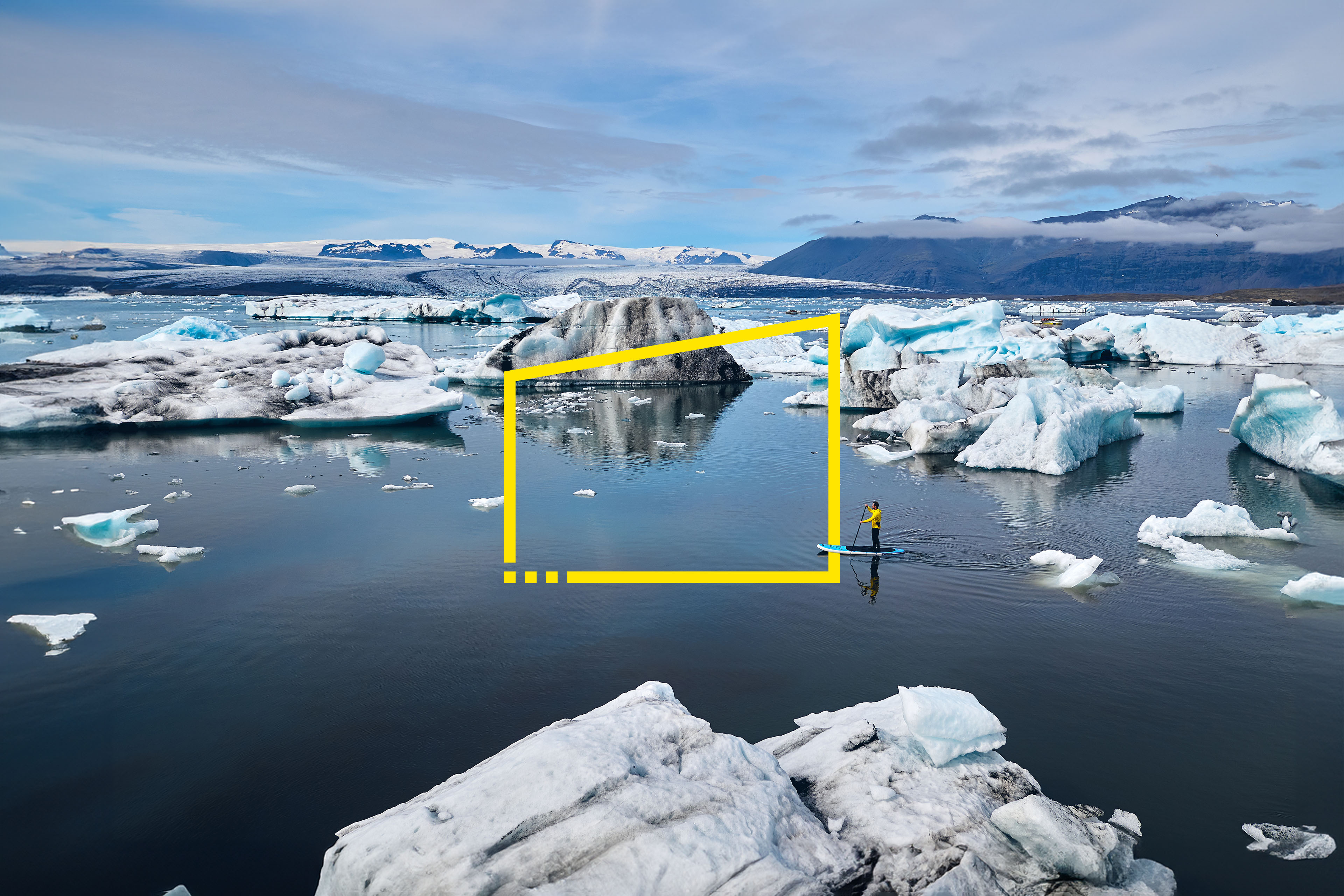EY refers to the global organization, and may refer to one or more, of the member firms of Ernst & Young Global Limited, each of which is a separate legal entity. Ernst & Young Global Limited, a UK company limited by guarantee, does not provide services to clients.

The telecommunications and technology sector has emerged as a leader in climate-related financial disclosures.
In brief
- The telecommunications and technology sector emerges as one of the leading sectors for climate-related financial risk disclosures.
- Companies responding to the Carbon Disclosure Project (CDP) obtain better scores overall compared to the rest of the sector.
The telecommunications and technology sector was not identified as a key sector by the Task Force on Climate-related Financial Disclosures (TCFD). However, it has emerged as a leading sector based on the analysis of the 2019 EY Global Climate Risk Disclosure Barometer. The sector achieved the fifth best scores of the 11 sectors analyzed, in terms of both coverage and quality of the TCFD recommendations. Each of the companies that were reviewed as part of the analysis, received a score from EY for the coverage and quality metrics on the basis of how they addressed or implemented all of the 11 recommendations by the TCFD.
On average, companies within our sector sample covered just over half of the TCFD recommendations, with 20% of the companies assessed covering more than 80% of those recommendations. Companies performed particularly well in terms of the targets and metrics area of the recommendations.
The telecommunications and technology sector obtained an overall quality score of 28% — by comparison, the two leading sectors: energy and transport, each achieved an overall quality score of 36%. The quality of disclosures related to climate targets and metrics was also higher than the quality of disclosures of the other TCFD components, with one-third of the assessed companies having achieved a quality score greater than 60% for this area. Companies that responded to Carbon Disclosure Project (CDP) obtained better scores overall when compared with those who didn’t.
The top-performing markets for this sector included Australia, Spain, the Netherlands, Belgium and Germany. This is likely because of the regulations in place for this sector in these markets.
Companies in markets including Indonesia, Kazakhstan, Russia, Saudi Arabia, the UAE and China were identified as poor performers according to our scoring methodology, as they did not disclose any information aligned with the TCFD recommendations. To a lesser extent, markets in Argentina, Ireland and the Philippines also scored close to 10% or less in terms of the quality of their climate disclosures.
We examined how the telecommunications and technology sector performed against the four areas, through which the TCFD recommendations are structured.
Governance
Approximately half of the assessed companies did not provide any disclosures related to governance, resulting in an average coverage score and a low score for quality when compared to the entire sample.
One-third of the assessed companies provided disclosures on the responsibilities of the board (e.g., corporate social responsibility (CSR) committee), and the internal process for reporting climate-related risks and opportunities to the board for review. However, most of the companies did not provide detailed information on management’s role in assessing, monitoring and managing both existing and emerging climate-related risks and opportunities.
One company stood out as a sector leader as it provided a more detailed description of management’s role in assessing and managing climate-related risks and opportunities. The structure for climate-related management was clearly explained, and the management’s process for monitoring and reviewing both current and emerging climate-related issues was clearly articulated. The company also included the topics discussed in management meetings and the frequency of such meetings.
Strategy
Just over half (55%) of the assessed companies reported information about their climate-related risks and opportunities. Of those companies, 35% disclosed both physical, and transition risks and opportunities (e.g., regulations, extreme weather and low emission services) with stated time horizons and financial impacts. However, the identified impacts were rarely related to the overall business strategy and more often presented as stand-alone impacts. It is important to note that companies identified a large number of climate-related risks and opportunities that were only disclosed within the CDP, and not within annual financial or CSR reports.
Most assumptions and methodologies for quantifying the cost were still ad hoc, and disclosures around the basis for the cost estimation were lacking. Also, among the 20 companies that mentioned or described the opportunities and resilience of their organization’s strategy to climate-related risks, less than half made a clear connection between their resilience and a 2°C climate scenario.
Companies headquartered in the Belgian and Spanish markets stood out as leaders in this sector, because of their detailed description of climate-related risks and opportunities with defined time horizons. Companies from these leading markets also assessed the financial impact of climate-related risks and opportunities using a well-defined and clearly explained methodology, and took into consideration a transition to a lower-carbon economy consistent with a 2°C climate scenario.
Risk management
Around 55% of the companies assessed disclosed some information regarding risk management aligned with the TCFD recommendations. Most of these companies described the link between their identification, assessment and management process for climate-related risks, and the organization’s overall risk management process.
Some of the poorest-performing companies often described their enterprise risk management system, but did not specifically mention climate-related risks. Other key information often lacking in the disclosures was the companies’ methodology used to determine the relative significance of climate-related risks in relation to other risks.
Only four companies had put in place, and described, an integrated approach toward the identification and assessment of climate-related risks with the organization’s overall risk management. Companies that scored well also included descriptions of how they make decisions to mitigate, transfer, accept or control climate-related risks in detail.
Targets and metrics
Seventy-five percent of the companies provided KPIs used to measure and manage climate-related risks and opportunities. Low performers only reported metrics related to their energy consumption, while the best performers included metrics regarding energy, water consumption and waste recycling.
Even though the quality of disclosures for targets and metrics was the highest of all the TCFD areas evaluated by EY, 18 of the 68 companies in the sample failed to disclose their Scope 1, 2 or 3 greenhouse gas (GHG) emissions. However, 37 companies were able to disclose a part of their Scope 3 emissions. Some companies failed to disclose the methodologies used to calculate their emissions and did not provide any historical data to allow trend analysis.
Regarding the targets used by the organization to manage climate related-risks and opportunities, 29 companies provided an important number of targets with time frames and baselines.
Companies identified as top performers were mostly from markets in Spain, Germany, the Netherlands and Australia. Unlike the other TCFD recommendations, targets and metrics were not only disclosed within CDP, but also within the annual financial or CSR reports. These sources often included:
- Detailed information on their Scope 1, 2 and 3 GHG emissions
- Descriptions of the methodologies used to measure or calculate the emissions as well as its historical data
- Targets for the reduction of the companies’ GHG emissions, indicating the base year, target year and percentage of mitigation
Summary
Although not identified as a key sector by the Task Force on Climate-related Financial Disclosures (TCFD), the telecommunications and technology sector has become a top scorer in climate-related financial disclosures. Overall, the sector achieved the fifth best scores for both coverage and quality of the implementation of the TCFD recommendations. This article draws on analysis from the 2019 EY Global Climate Risk Disclosure Barometer and provides a snapshot of the telecommunications and technology sector’s uptake of the recommendations by the TCFD.
How EY can help
-
Supporting organizations with physical and transition risks associated with climate change, and assisting them with market and regulatory changes.
Read more
Related Articles
How banks are adopting recommendations on climate-related disclosures
The banking sector scored high for quality on recommendations by the Task Force on Climate-related Financial Disclosures (TCFD). Learn more.
How the transport sector integrates risks into corporate disclosures
Transport is one of the best-performing sectors for adopting TCFD recommendations but with significant differences between markets. Learn more.




